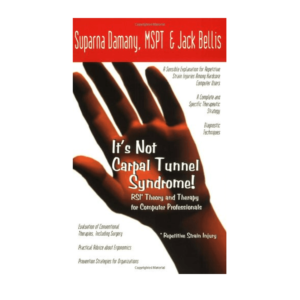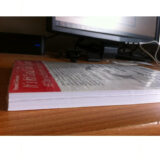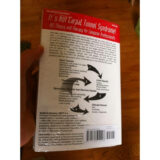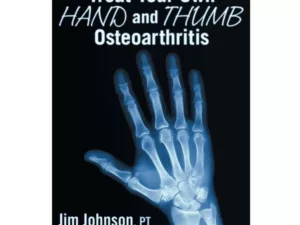(Last Updated on November 4, 2025 by Henry)
- Name: “It’s Not Carpal Tunnel Syndrome!”
- Type: Rehab Manual
- Rating: 4.6 out of 5 stars
- Availability: Amazon
- Introduction – What is RSI & theory, in a nutshell, prognosis, diagnosis
- Classification of RSI syndromes, organized prevention, and setting up your workstation
- Therapy, ergonomics & treatments
It’s Not Carpal Tunnel Syndrome! by S.Damany, MSPT
Publisher: Simax (April 1, 2001)
What Can You Learn From “It’s Not Carpal Tunnel Syndrome!”?
Practical Solutions to Save You From the World of Pain:
Not everything is CTS & having entered to modern age & facing its intense use of computers means that Repetitive Strain Injury is imminent. It affects almost all of us; what differs is only a matter of degree.
“It’s Not Carpal Tunnel Syndrome!” RSI Theory and Therapy for Computer Professionals can save you from a world of pain, offering computer users who suffer from repetitive strain injury (RSI) an effective program for self-care.
It explains the symptoms, prevention, and treatment of RSIs and also addresses the often-overlooked root causes of RSIs. This holistic program treats the entire upper body with ergonomics, exercise, and hands-on therapy, increasing the likelihood that surgery and drugs may be avoided.
Learn what RSI is & gain an understanding of how it affects our forearms & fingers. Aching, burning, then pins & needles followed by numbness. The result of having muscles in a constant, unnatural state of tension, having fibrous knots of tissue accumulated on the nerves that go to your fingers.
Surgery can be a temporary fix, but after a couple of months same symptoms likely return. Understanding ergonomics, how to set up your working station, alleviating pain by releasing tensions from overused muscles, as well as doing exercises to bring balance, can be key. Getting control over your habits is a way to solve these painful problems for you
Prognosis, diagnosis & classification of RSI syndromes to help you gain an understanding of what you are up against. Followed by therapy options, ergonomics & treatment recommendations.
With this knowledge, you can proceed with organized prevention to set up your workstations in a functional way that prevents further symptoms. With better posture, healthier habits, and less pain, RSI can be healed.
Repetitive Strain Injury is a vicious cycle starting with root causes like working in one position for years, millions of repetitions, intensity, aging & loss of tissue resilience. As well as personality, your unique physiology & anatomy affect ergonomics.
In turn, it will lead to initial results of RSI, which can be fatigue, slouching posture, muscle tension & chest compression.
Ongoing initial symptoms will cause secondary symptoms down the road. Inflammation & swelling, abrasion & irritation, loss of sleep & nerve entrapment. Permanent overloading & compensation. What’s even worse, in return, all of this will cause initial results of RSI all over again. That’s the vicious cycle of Repetitive Strain Injury.
In a sustained state, a third set of symptoms will arise, which are pain, numbness, anxiety & depression. With a little bit of know-how, this loop can be broken. RSI can be healed, & even in the most difficult of cases, at least bring it down to a tolerable level.
There’s an extensive list of helpful tricks for adapting to living with RSI, various kinds of physical & occupational therapy treatments, acupuncture, stretching, vitamins & nutrition, relaxation techniques, deep tissue massage & guided visualization
Sounds like an intimidating task, yet it can be brought down to clear, manageable definitions, providing you with information on the psychological ramifications of RSI & how to handle both time off from work & when returning to the office.
About the Author of It’s Not Carpal Tunnel Syndrome
Suparna Damany, MSPT, is a certified hand therapist and certified ergonomic assessment specialist. She lives in Allentown, Pennsylvania. Jack Bell is a journalist and the author of Computers Stink. He lives in Philadelphia, Pennsylvania.
Book Details
- Publisher: Simax (April 1, 2001)
- Language : English
- Paperback: 234 pages
- Dimensions : 15.24 x 1.27 x 22.86 cm
Thanks for Stopping By
Have Questions?
Please Leave A Comment










